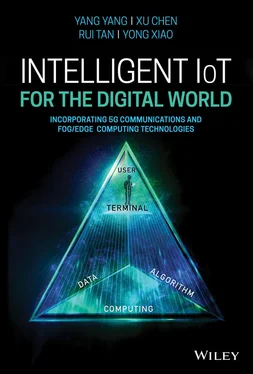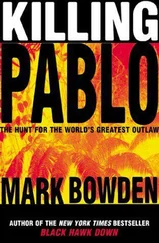Library of Congress Cataloging-in-Publication Data
Names: Yang, Yang, 1974‐ author.
Title: Intelligent IoT for the digital world / Yang Yang, ShanghaiTech
University and Peng Cheng Lab, China, Xu Chen, Sun Yat‐sen University, China, Rui Tan,
Nanyang Technological University, Singapore, Yong Xiao, Huazhong University
of Science and Technology, China.
Description: First edition. | Hoboken, NJ : John Wiley & Sons, Inc., 2021.
| Includes bibliographical references and index.
Identifiers: LCCN 2020039767 (print) | LCCN 2020039768 (ebook) | ISBN
9781119593546 (cloth) | ISBN 9781119593553 (adobe pdf) | ISBN
9781119593560 (epub)
Subjects: LCSH: Internet of things.
Classification: LCC TK5105.8857 .Y355 2021 (print) | LCC TK5105.8857
(ebook) | DDC 005.67/8–dc23
LC record available at https://lccn.loc.gov/2020039767LC ebook record available at https://lccn.loc.gov/2020039768
Cover Design: Wiley
Cover Image: produced by Julie Liu
Since the concept of “pairing technology” or “digital twin” was first introduced by NASA for the space exploration and aviation industry 1 , 2 , we have been on our way towards the digital world. Over the last decade, this digitization progress has been greatly accelerated, thanks to a broad spectrum of research and development (R&D) activities on internet of things (IoT) technologies and applications. According to the latest Cisco Annual Internet Report published in February 2020, the number of networked devices in the world will reach 29.3 billion by 2023, which includes 14.7 billion Machine‐to‐machine (M2M) or IoT devices 3 . While the joint report by Ovum and Heavy Reading, announced in May 2019, gave a more optimistic number, i.e. 21.5 billion IoT devices by 2023 4 . This explosive growth of IoT devices and connections clearly shows the technical trends and business opportunities of Machine‐type Communications (MTC), such as the Ultra Reliable Low Latency Communications (URLLC) scenario specified in 3GPP Release 16 standard 5 , and the massive MTC (mMTC) scenario based‐on Narrowband IoT (NB‐IoT) technology and endorsed by the latest International Mobile Telecommunications‐2020 (IMT‐2020) 5G standard. Both IoT and MTC‐focused scenarios have been widely recognized and welcomed by different industry verticals. For examples, sensor devices for medical and health monitoring applications are usually light, reliable, energy efficient, wearable, or even implantable. Camera devices for security and public safety applications are usually hidden, durable, massively deployed, synchronized, and always connected. Robot devices for intelligent manufacturing applications are accurately positioned, constantly tracked in three dimensions, busy scheduled, fully utilized, and always ready for instant action. Besides the basic functions of sensing and transmitting data, some “smart” devices possess additional computing and storage resources, thus are capable of data screening and preprocessing tasks with localized tiny artificial intelligence (AI) algorithms 6 .
These massive connected devices or things deployed in our neighborhood are continuously generating more and more data, which is collected at different time scales, from different sources and owners, and has different formats and characteristics for different purposes and applications. As the UK mathematician Clive Humby pointed out in 2006, “Data is the new oil. It is valuable, but if unrefined it cannot really be used.” According to the IDC's “Data Age 2025” white paper 7 , sponsored by SEAGATE, the total data in our world is increasing at a Compounded Annual Growth Rate (CAGR) of 61% and will reach an astonishing 175 zettabytes (ZB) by 2025, among which 90 ZB data will be contributed by a variety of IoT devices. In order to realize its full potential, we must tackle the big challenge of integrating, processing, analyzing, and understanding such a huge volume of heterogeneous data from a wide range of applications and industrial domains. From the perspective of technology developers and service providers, more high‐quality data, in terms of variety, accuracy and timeliness, will definitely contribute to deeper knowledge and better models for characterizing and representing our complex physical world, thus enabling us to develop very precise digital twins for everything and everyone in the digital world. This digitization process will effectively reshape our human societies, accelerate overall economic growth, and generate huge commercial values, since disruptive data‐driven business models and cross‐domain collaboration opportunities will be created and fully utilized for exploring all sorts of potential markets. According to a study of IDC, the worldwide revenue for big data and business analytics was about USD189.1 billion in 2019, and will quickly increase to USD274.3 billion by 2022 8 . The importance of data for future economic growth and social development has been widely recognized. In April 2020, the Chinese government officially defined “data” as a new factor of production, in addition to the traditional ones such as land, labor, capital, and entrepreneurship (or enterprise). It is clear that the digital world will rely on all kinds of trusted data to make timely, correct and fair decisions, and eventually, to provide comprehensive, objective and efficient solutions for every industrial sector and government department. Besides the volume, variety and value of data, IDC has predicted that, by 2025, about 30% of the world data, i.e. 52.5 ZB, will be consumed in real‐time 9 . For example, intelligent manufacturing and interactive entertainment applications both have high requirements on data velocity, hence local data should be quickly processed and analyzed by the devices/things themselves, or at nearby edge/fog computing nodes. Last but not least, data privacy and veracity are protected by not only advanced technologies such as a trusted execution environment (TEE), secure multi‐party computation (MPC), differential privacy, blockchain, confidential computing, and federated learning, but also specific laws such as the General Data Protection Regulation (GDPR) in the EU since May 2018 and the California Consumer Privacy Act (CCPA) in the US since January 2020. Both laws aim at protecting every consumer's personal data, anywhere at any time, and set strict rules on information disclosure and transparency, thus to enforce that collecting people's data will act in the best interest of those people.
The traditional three‐layer IoT architecture consists of (i) the perception layer with devices or things, i.e. sensors and actuators, for collecting data and taking actions; (ii) the network layer with gateways, access points, switches and routers for transmitting data and control signals; and (iii) the application layer with clouds and data centers for analyzing and exploiting cross‐domain data, and developing and managing intelligent IoT services. As IoT devices and their data are growing explosively, this architecture cannot satisfy a series of crucial service requirements on massive simultaneous connections, high bandwidth, low latency, ultra‐reliable under bursty traffic, end‐to‐end security and privacy protections. In order to tackle these challenges and support various IoT application scenarios, a user‐centric flexible service architecture should be implemented, so that feasible micro‐services in the neighborhood can be identified and assembled to meet very sophisticated user requirements 10 . This desirable data‐driven approach requires a multi‐tier computing network architecture that not only connects centralized computing resources and AI algorithms in the cloud but, more importantly, utilizes distributed computing resources and algorithms in the network, at the edge, and on IoT devices 11 . Therefore, most data and IoT services can be efficiently processed and executed by intelligent algorithms using local or regional computing resources at nearby sites, such as empowered edge and distributed cloud 12 . In doing so, a large amount of IoT data need not to be transmitted over long distances to the clouds, which means lower communication bandwidth, lower service delay, reliable network connectivity, lower vulnerability to different attacks, and better user satisfaction in all kinds of industrial sectors and application scenarios.
Читать дальше












